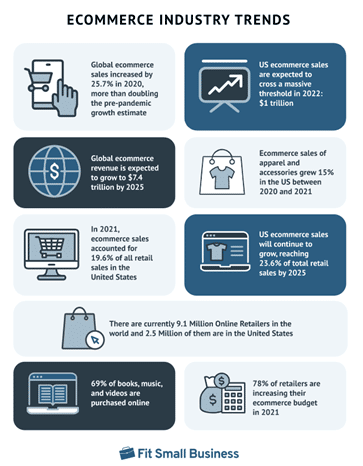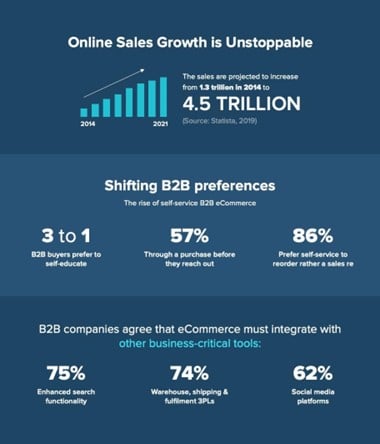“Change your focus from making money to serving more people. Serving people makes the money come in.” ~ Robert Kiyosaki – Why are you in business? Is it because you crave the freedom to chart your own course? Do you want to get rich? Build a better world?
IMAGE: UNSPLASH
Regardless of your business model or sector, the mission of most companies is to solve problems. Your solution could be anything from alleviating everyday boredom to revolutionizing an entire industry. Whatever it is, you’ve conceptualized a new product or thought of an innovative way to improve upon what’s already out there.
It starts with an idea that you’re passionate about, finding a great name using a name generator tool and develops into a viable company with a growing customer base. Serving people, providing solutions, and everything else that comes with building a trusted brand feels good. It’s satisfying. However …
Even if passion inspires you to offer your solution to the world, your ultimate goal is to make money in the process. After all, few of us are both altruistic and independently wealthy. No one is able to survive on passion and personal fulfillment alone.
For a growing number of entrepreneurs, starting an online business is the ticket to financial freedom. But, if you’re going to put in the effort it takes to make it, you should aim high and reach for the stars.
Our goal is to provide you with tips and techniques that are designed to double your online business revenue.
Most of them will require very little effort or investment on your part. They’re simply ways to make your creativity and money work harder for you. Once you understand the underlying principles, increasing your revenue will become almost effortless regardless of the competition or the state of the economy.
Principles Of Money-Making in eCommerce
No matter what type of online business you develop, there are four ways that you can generate more income. In fact, these methods form the underlying principles of business growth and revenue generation in any type of commerce. You can attract more customers, raise your price, increase purchase frequency, or increase the dollar amount per sale.
Each method has pros and cons, and some work better than others for reasons that will become apparent as you read on.
1. Attracting more customers. This is the method of revenue generation that seems to dominate marketing strategies. It’s necessary to build your customer base if you want your company to remain viable and competitive. That’s true as a startup and continues to be a factor as trends emerge, new competition enters the market, consumer pain points evolve, and your initial customer base outgrows your brand.
However, don’t make the mistake of constantly chasing new business to the detriment of product development or your existing customers. Too many companies emphasize attracting new customers when they should be leveraging the power of brand loyalty.
2. Raising your prices. Raising your price is an obvious solution for increasing revenue. But, you must be careful how and when to deploy this method. Have you improved your product in a way that warrants a price increase? Is your product popular or essential enough that raising the price won’t drive customers away?
Transparency is essential if you’re going to raise your prices, too. You can’t just blame a price increase on inflation and leave it at that.
Were customers informed of this upfront if the initial price was an introductory offer? Are customers getting more for their money in terms of quantity or quality? An outside factor, such as supply chain disruption or increased cost of production, might make a price increase unavoidable. But did you give your customers advance warning first?
3. Increasing the frequency of sales. Customers buying from your website more often will translate to a higher overall sales volume. This is an easy method for brands that sell music, food, art, and other tangible items that people tend to purchase more than once. If they buy one thing per month, what might entice them to buy once a week or shop your website every day?
4. Increasing per-customer sales. You can use this method by upselling, cross-selling, or repeat business. In fact, 80% of your revenue will land in your account through repeat business from just 20% of your existing customer base. This is known as the Pareto Principle.
For example, customers who purchase trainers might also be interested in socks, sporting equipment, or sportswear. Understanding how these principles work will allow you to deploy them strategically to nurture customers wherever they are on their journey.
11 More Strategies To Double Your Online Revenue
Online shopping is expected to serve an audience of more than 200 million consumers within the next three years. These tips will help you reach your share of customers and exponentially increase your sales.
1. Add a Sales Bump at Checkout
This is the digital equivalent of an impulse purchase that’s encouraged by you. Consider how fast food workers increase sales by asking the customer if they want to supersize their drink or add fries to their order. Amazon also does this well by adding a “people also purchased” selection with most sales.
The trick is to offer a value-added or complimentary item that’s less expensive than the product the customer is buying. Just a few sentences before final checkout will do. For example, suggesting a canteen when someone purchases a backpack or a selection of fishing lures with the purchase of a tackle box. The increase is between 15% and 60% over the original order amount, depending on the type of product and order bump offered.
This differs from upselling, which is done after the initial sale is completed (more on that in a minute).
2. Create Upselling Triggers
Normally, upselling is the art of offering customers a higher-end but comparable product. Consider a car dealer who steers you toward a deluxe model or pricier options.
While this can be done online, a more common version of this is to use automation to upsell customers after checkout. Booking websites often do this when customers schedule a flight or book a room.
The final sale will trigger a popup or an email notification shortly after checkout offering a discount for add-on services like car rentals, travel insurance, or tours. They could also offer discounts on a sportier rental car, an extra day, or deluxe accommodations as an upsell. Selling vitamins? Why not provide a larger supply at a slightly discounted price?
3. Make Them An Offer They Can’t Refuse
You’ve got the customer past consideration, and they’re just about to buy when they suddenly develop cold feet. Save the sale by making them an offer that reduces their risk. This is especially effective if the price is high or the commitment is long-term.
For example, customers might be hesitant to commit to a pre-billed three-year contract for your service, even at a discounted monthly rate. But, they’ll be more willing to take a chance if you offer them a free trial or money-back guarantee.
4. Revamp Your Website
Usually, this requires no more effort than upgrading images or streamlining the layout. For example, one of my clients tripled the number of consultations at their dental practice by replacing stock photos with before and after images of real patients. Customer testimonials and user-generated content are also great ways to nudge hesitant prospects toward conversion. Few things beat social proof, but authenticity is key.
Avoid stock images or paid endorsements. Ensure that the images you use are clear and high in quality and that any real people featured get permission to use their words or likeness. To start, look at your website through the customer’s eyes.
- Does the layout look good?
- Are there any dead links?
- Is there anything on the page that’s confusing or unclear? This is especially important when it comes to product images and descriptions.
- Does the content lead the eye down to your call to action?
- Is the CTA clear and actionable?
The key to increased sales is to make the process as alluring and easy as possible for the customer.
5. Don’t Neglect Your Checkout Page
Optimizing your website is a start, but many a sale is lost at checkout. The problems range from glitchy shopping cart software to a lack of transparency regarding shipping, taxes, and other pricing issues.
Must-have checkout page features include:
- Detailed product description, so they know exactly what they’re getting
- Upfront, bottom-line pricing
- Trust badges and customer testimonials
- Reminders of product benefits
- Satisfaction guarantees
6. Offer A Curated Shopping Experience
In an age of cold, calculated technology, a little personalized service goes a long way. This is the perfect opportunity to put data to good use and deploy automation to your advantage.
For example, data mining and site analytics will provide valuable information about which pages or products generate the most interest, insight into how customers interact with your content and even highlight when your audience is most active. Customer history databases will give you information about past purchases and customer inquiries.
All this information can be used to create detailed customer profiles and personas, unleash flash deals via cold email or SMS marketing, and provide a curated, personalized shopping experience designed to meet the customer’s needs.
7. Ask Customers What They Want
The faster way to understand what your audience wants is to ask them directly. This can be done via email, in the form of a customer success survey using Survey Templates, or through polling on social media platforms.
Indirectly, you can read customer reviews for similar products on sites like Amazon or go directly to your competitor’s site to see what their customers are saying. This way, you’ll identify ways to improve your services.
8. Create Multiple Landing Pages
Are you still creating only one landing page and expecting it to convert? No two customers are alike, nor are they at the same point on their journey at the same time. Some know what they want and choose a more linear path toward conversion, while others are hesitant and need reassurance or more information.
Segment and refine your audience by the most detailed metrics possible and create a separate landing page for each audience segment. This is especially important if your customer base is divided among B2B and B2C business or professionals and casual users.
A janitorial service is looking for a different level of performance than someone who just needs to keep the house tidy. Professional athletes wouldn’t look for the same features as weekend joggers.
Landing pages also perform different functions, depending on their type.
For example, product landing pages act as lead magnets to get prospects to your page. Checkout landing pages are used to keep visitors on your site after they’ve completed a purchase.
There’s no limit on the number of landing pages you can create for each campaign. The more, the better. According to research, 15 or more landing pages increase average conversions by up to 55%. Websites that use 40 or more saw a 500% increase in conversion rates. Just the simple act of directly addressing a customer pain point increased conversion rates by 80% over standard content with a generic CTA.
9. Split-Test Critical Elements
It happens all the time. You built a great eCommerce site, everything is optimized, and you’re active on social media. Then, launch day cones, and nothing happens. Maybe people visit your site, but all they do is browse and leave.
All that effort and nothing to show for it at the end of the day.
Maybe the subject line on your email wasn’t as compelling as you thought. Perhaps you chose the wrong social media platform or approach. We discovered the dental practice dilemma after A/B testing various images.
Pre-launch, test a different element of your website, campaigns, and platforms to determine which are most effective at engaging and converting your audience. Make sure to test one element at a time, use a substantial set of audience segments from comparable demographics, and test long enough to get reliable results. A good rule of thumb is about 1,000 prospects – 500 control and 500 test subjects – and run the split test for at least a week. If you like, you can use this weekly schedule template to organize your split tests. It will help you get a clearer view of things.
10. Optimize Product And Service Descriptions
Never forget that you’re not selling products; you’re selling solutions. Optimize your product descriptions to address specific customer pain points. Images and product descriptions should highlight features that directly relate to what your audience wants the most from your brand.
11. Provide Exemplary Customer Service
The average consumer is exposed to your brand seven times before awareness transforms into consideration. They’ll also research your brand on several devices, check out your socials, and read online reviews before making up their minds.
Make sure that you’re available 24/7/365 to answer questions and address concerns. This can be accomplished by providing an email address and customer service number on every page of your website and all of your social media profiles. You should also deploy automation via chatbots on your website and SMS messaging.
Keep an eye on your Google My Business and other online listings. Acknowledge mentions and address any negative comments or reviews immediately and publically. Be transparent and authentic, and stand by any claims you make.
Final Thoughts
No matter your underlying company mission, your ultimate goal is to increase your revenues. The above tips are meant to provide you with actionable techniques that will generate more sales by attracting customers and nurturing them well.
That’s how you grow your brand and keep your audience coming back for more.
IMAGE: UNSPLASH
If you are interested in even more business-related articles and information from us here at Bit Rebels, then we have a lot to choose from.




COMMENTS